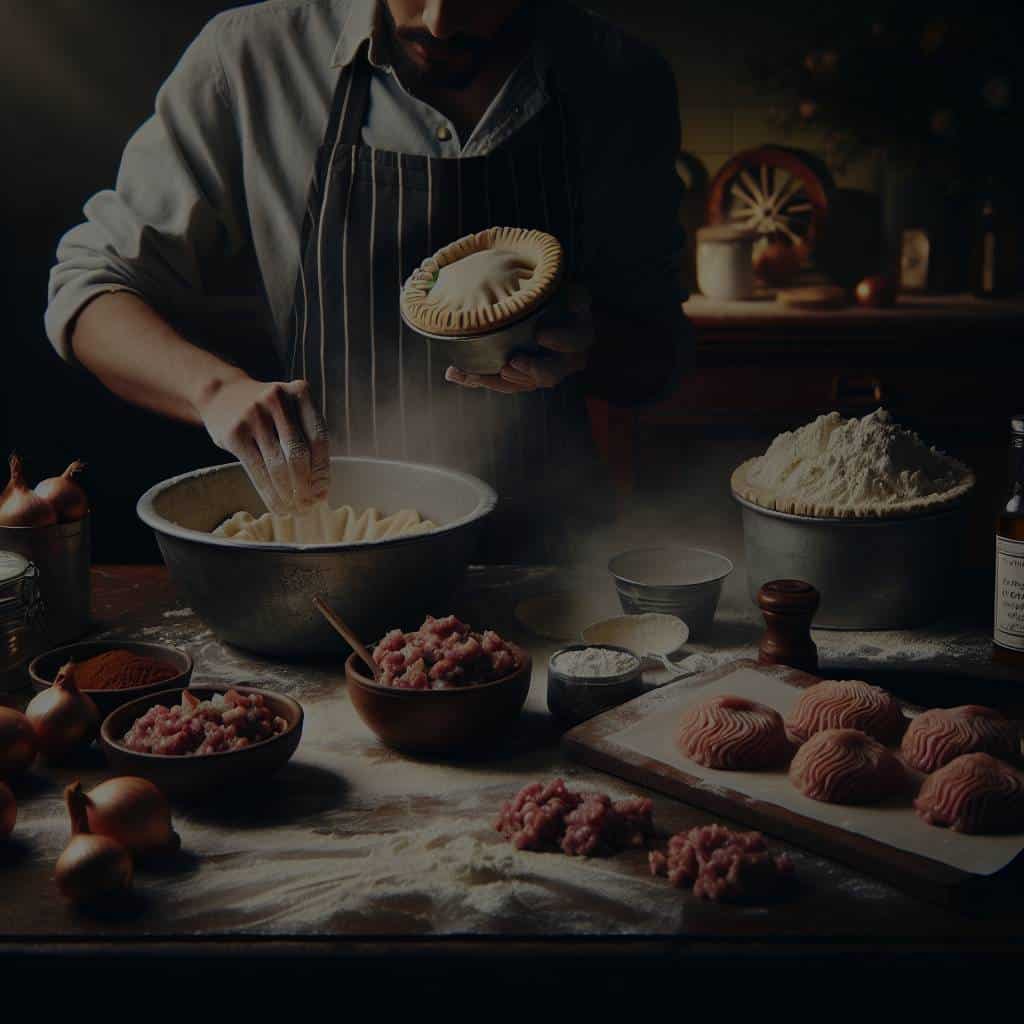How to Make a Traditional English Pork Pie with the Perfect Hot Water Crust?

The English Pork Pie, a masterpiece of pastry and meat, has a history as rich as its flavors. This traditional dish, with its succulent pork filling encased in a crisp hot water crust, is a significant part of British culinary heritage. The making of this iconic pie involves a unique method, where the dough is made with boiling water, resulting in a sturdy yet delectable crust that distinguishes the English Pork Pie from its counterparts. If you’re keen on learning how to make this classic, you’re in the right place. Today, we’ll guide you through the process, offering tips and tricks along the way to ensure you get it just right.
Choosing and Preparing Your Pork
Your pie will only be as good as the pork you choose for the filling. Opt for shoulder cuts, as they have the right balance of fat and meat, ensuring a moist and flavorful pie. Start by cutting the meat into small, bite-sized pieces. Don’t trim off all the fat – it melts during cooking, enhancing the taste of the pie.
Also to read : Can You Craft a Luxurious Banoffee Pie with a Crunchy Biscuit Base?
Next, season the pork generously with salt. The seasoning doesn’t just add flavor; it also draws out the water content from the pork, reducing the chance of a soggy crust. Besides salt, you could also add other herbs and spices to your liking.
Preparing Your Hot Water Crust
Having prepared your meat, it’s now time to move on to the hallmark of the English Pork Pie: the hot water crust. This specific type of crust is what sets this pie apart from others. It’s sturdy enough to hold its shape without a pie tin, yet it achieves the perfect level of flakiness when baked.
Have you seen this : What’s the Best Method for a Savory Steak and Ale Pie with Flaky Pastry?
To make the dough, you’ll need to boil water and lard together. Once boiling, pour this mixture onto your flour, stirring it until a dough forms. It’s critical to handle the dough while it’s still warm, as it becomes crumbly and hard to work with as it cools. Once your dough is ready, set aside a third for the pie top, and use the rest to line your pie tin.
Assembling the Pie
Now that you’ve got your filling and your dough, it’s time to assemble the pie. Place your seasoned pork into the dough-lined tin, making sure not to overfill it. Overstuffing could lead to the pie bursting during the baking process.
Roll out the dough you set aside earlier, cut out a circle roughly the same size as the top of your tin, and place it over the meat. Crimp the edges to seal the pie, and make a hole in the center of the top crust. This hole allows steam to escape during baking, preventing the pastry from becoming soggy.
Taking It to the Next Level: Making Your Own Stock
To really impress your guests, consider making your own stock. While the pie is baking, simmer pork bones with vegetables and spices, and then strain the liquid. Reduce this stock until it’s a thick, flavorful jelly. Once your pie is baked and cooled slightly, pour the hot stock through the hole in the top crust. As it cools, the stock will set into a delicious jelly, adding another layer of flavor to the pie.
Baking and Serving Your Pie
The final step is to bake your pie. Brush the top with a beaten egg to give it a beautiful, golden shine. Bake at a high temperature initially, then reduce the heat and bake for a longer time. This ensures the crust turns out crisp and golden, while the meat inside is thoroughly cooked.
Your English Pork Pie is now ready to be enjoyed. Serve it hot or cold, with some pickles or mustard on the side for a complete, satisfying meal.
Remember, making the perfect English Pork Pie is not just about following a recipe. It’s about mastering the techniques of preparing the meat and the hot water crust, and most importantly, it’s about putting your heart and soul into it. Good luck, and happy pie-making!
Perfecting the Details: Pie Crust and Egg Wash
While the pork pie filling is the heart of this traditional dish, the crust is indisputably its soul. The crust is the first thing you taste when you bite into a pork pie, and it’s what creates that satisfying crunch. The hot water crust, unique to this pie, is like no other crust you’ve ever tasted. It’s made by combining boiling water with lard and flour, which creates a dough that’s firm yet flaky, and sturdy enough to hold the pie together without a tin.
Start by boiling water and lard in a saucepan. Once the mixture begins to boil, remove it from the heat and gradually add flour, stirring constantly to avoid lumps. Once a dough starts to form, knead it quickly while it’s still warm. If the dough cools, it becomes crumbly and difficult to handle. Set aside a third of the dough for the pie’s lid, and use the remaining dough to line your pie tin. Remember to roll the dough thickly; a thin crust could break under the weight of the filling.
Before baking, apply an egg wash to the pie. This step might seem minor, but it has a significant impact on the final appearance of the pie. Brushing the crust with a beaten egg before baking gives it a lovely golden color, making your pie look as good as it tastes. Plus, the egg wash helps seal the pie, preventing leaks and ensuring the filling stays moist. To make the egg wash, simply beat an egg lightly and brush it over the crust using a pastry brush.
Conclusion: A Labor of Love
Creating the perfect English Pork Pie can be a labor of love, but it’s well worth the effort. Remember, it’s not just about the pork pie recipe, it’s about the technique, the ingredients, and the care you put into each step of the process. From choosing the right cut of pork shoulder, to simmering your own flavorful stock, to expertly crafting your hot water pastry, each decision you make contributes to the final result.
Serve your pie hot or at room temperature, accompanied by pickles and mustard for a traditional touch. Whether you’re a fan of Melton Mowbray pies or a hand-raised pork pie enthusiast, creating your own English pork pie is a rewarding experience filled with tradition and flavor.
A word of caution: once you’ve mastered the art of making pork pies, you might find yourself with a new favorite hobby. So, prepare your parchment paper, make sure you’ve got plenty of salt and pepper, and start your journey to becoming a pork pie connoisseur.
Remember, baking is not just a craft, it’s a show of affection. Every time you bake, you put a piece of your heart into what you’re making. So, as you embark on your pork pie-making journey, remember to bake with love. Good luck, and happy baking!
